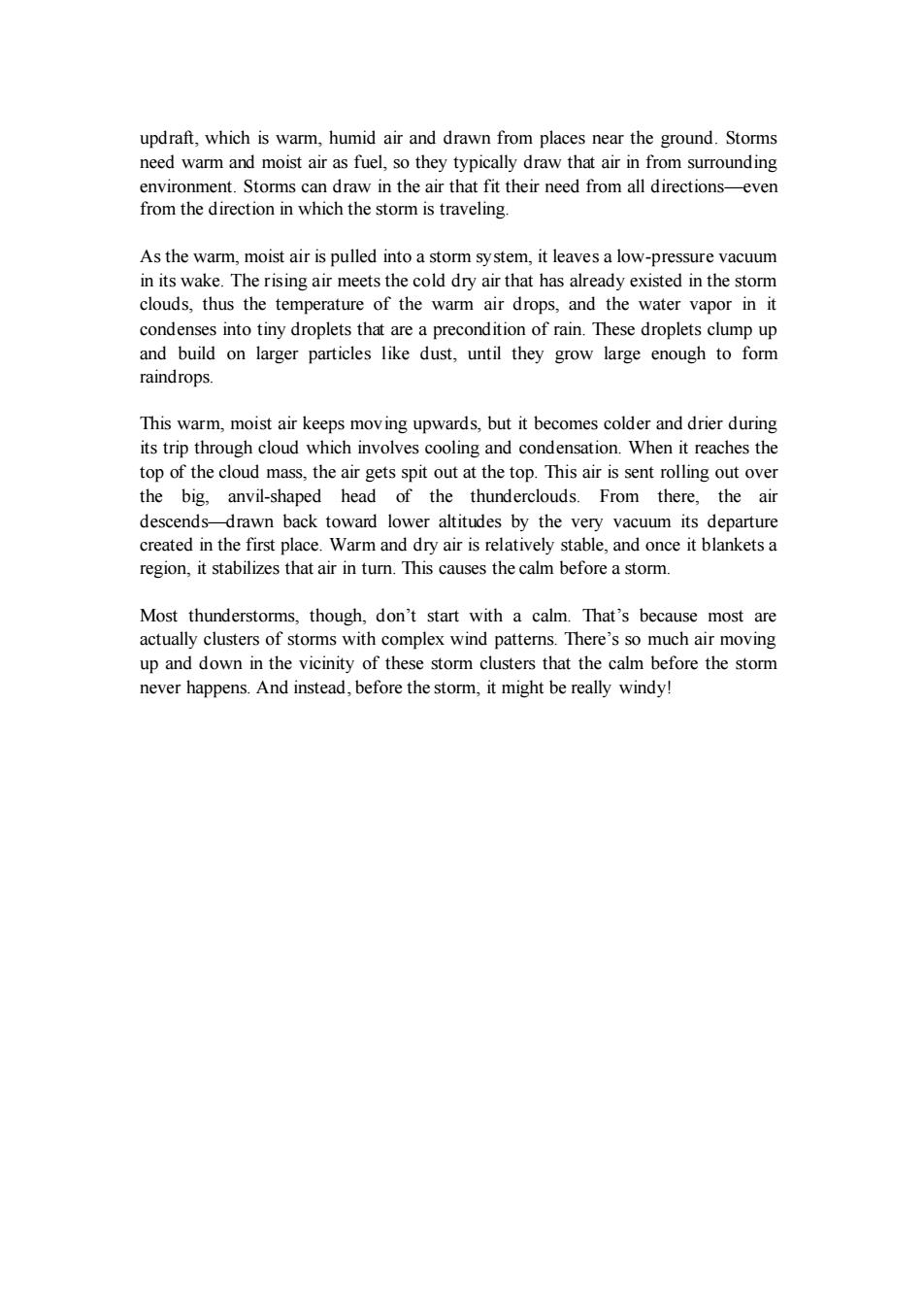正在加载图片...

updraft,which is warm,humid air and drawn from places near the ground.Storms need warm and moist air as fuel,so they typically draw that air in from surrounding environment.Storms can draw in the air that fit their need from all directions-even from the direction in which the storm is traveling. As the warm,moist air is pulled into a storm system,it leaves a low-pressure vacuum in its wake.The rising air meets the cold dry air that has already existed in the storm clouds,thus the temperature of the warm air drops,and the water vapor in it condenses into tiny droplets that are a precondition of rain.These droplets clump up and build on larger particles like dust,until they grow large enough to form raindrops. This warm,moist air keeps moving upwards,but it becomes colder and drier during its trip through cloud which involves cooling and condensation.When it reaches the top of the cloud mass,the air gets spit out at the top.This air is sent rolling out over the big,anvil-shaped head of the thunderclouds.From there,the air descends-drawn back toward lower altitudes by the very vacuum its departure created in the first place.Warm and dry air is relatively stable,and once it blankets a region,it stabilizes that air in turn.This causes the calm before a storm. Most thunderstorms,though,don't start with a calm.That's because most are actually clusters of storms with complex wind patterns.There's so much air moving up and down in the vicinity of these storm clusters that the calm before the storm never happens.And instead,before the storm,it might be really windy!updraft, which is warm, humid air and drawn from places near the ground. Storms need warm and moist air as fuel, so they typically draw that air in from surrounding environment. Storms can draw in the air that fit their need from all directions—even from the direction in which the storm is traveling. As the warm, moist air is pulled into a storm system, it leaves a low-pressure vacuum in its wake. The rising air meets the cold dry air that has already existed in the storm clouds, thus the temperature of the warm air drops, and the water vapor in it condenses into tiny droplets that are a precondition of rain. These droplets clump up and build on larger particles like dust, until they grow large enough to form raindrops. This warm, moist air keeps moving upwards, but it becomes colder and drier during its trip through cloud which involves cooling and condensation. When it reaches the top of the cloud mass, the air gets spit out at the top. This air is sent rolling out over the big, anvil-shaped head of the thunderclouds. From there, the air descends—drawn back toward lower altitudes by the very vacuum its departure created in the first place. Warm and dry air is relatively stable, and once it blankets a region, it stabilizes that air in turn. This causes the calm before a storm. Most thunderstorms, though, don’t start with a calm. That’s because most are actually clusters of storms with complex wind patterns. There’s so much air moving up and down in the vicinity of these storm clusters that the calm before the storm never happens. And instead, before the storm, it might be really windy!